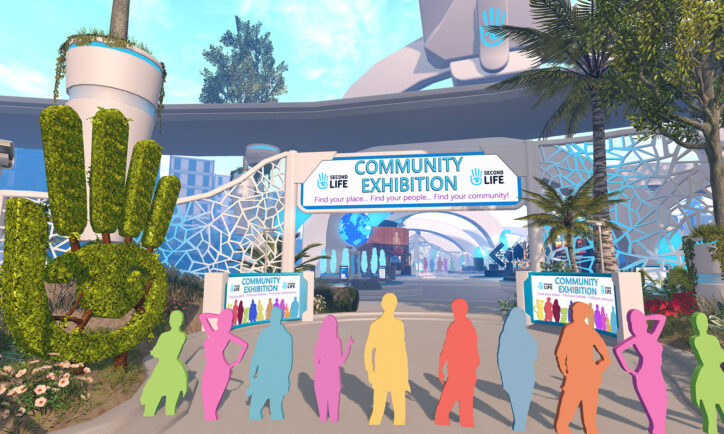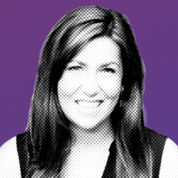A Second Chance at Second Life and a Digital Third Space

The idea of “third places” IRL — the community hangout spots like cafes, barber shops, libraries, and churches where people can gather and connect — is fading away in today’s digital world.
Attempts to recreate these third places in digital space have flashed and fizzled, including Second Life (SL), the early 2000s online experience that pioneered virtual worldbuilding through users’ creative collaboration. Second Life promised a digital reality simulation experience that hasn’t fully materialized, but it offered lessons for how we can build engaging and self-sustaining virtual worlds. The metaverse hype of 2021 renewed interest in virtual worlds again as the pandemic shut down third places everywhere. However, the “Facebook of the Metaverse” – the platform to launch the metaverse into the mainstream – once again didn’t arrive before GenAI stole the spotlight.
But now, with artificial intelligence and other emerging technologies like blockchain, quantum computing, and advancing virtual reality hardware, we’re closer than ever to creating an immersive and functional digital third space.
Why We Need Third Places
Third places are more than just casual hangouts; they’re essential for nurturing community bonds and supporting individual well-being. Outside our homes and workplaces, these spots offer a relaxed environment where people can engage and connect. Solid evidence suggests that spending time in these social settings can boost mental health by providing a sense of belonging and reducing feelings of isolation. Sociologists say that people who frequent these communal spaces report higher happiness levels and a stronger connection to their community.
Ray Oldenburg, the sociologist who coined the term in 1989, described third places as “anchors” of community life that foster broader and more creative interactions. He documented their role in sparking spontaneous conversations and creative exchanges, which build supportive networks and enhance community resilience. These interactions are crucial; they allow for the exchange of ideas, support, and resources, empowering communities to thrive.
Despite their proven benefits, engagement in third places has been declining, mainly due to how social media and smart devices have redefined the ways we socialize. This decline is alarming, as it means we’re losing critical informal networks that help mitigate stress and contribute to our overall mental health. It’s high time for urban planners and community developers to recognize the importance of these spaces and work towards revitalizing them. Likewise, we should all value the physical and emotional health benefits of community interaction and resolve to find a third place or spend more time in the ones we already have.
Nonetheless, the economic incentives of the social engagement economy, which refers to the financial opportunities created by online social interactions, and the freedom of association offered by online spaces will continue to push our social habits further into the digital realm. For those who feel uncomfortable in the third places near their physical location or who can’t access them, more immersive digital experiences could offer significant benefits.

The Potential of Digital Third Places
The concept of digital third places has gone through booms and busts, with the metaverse and immersive digital experiences still remaining niche today. Before the metaverse entered the public vocabulary in 2021, an early precursor platform showed how we can structure an immersive virtual environment to work as a third place.
Second Life, launched in 2003 by Linden Labs, is a digital platform born on the desktop where users can experience simulated reality through customizable avatars (known as “residents”) capable of socializing, creating, shopping, selling, owning property, and engaging in various activities. It’s like multiplayer SIMS, billing itself as “the original metaverse.” It was a cultural phenomenon at its peak around 2008-2013 as a medium for artists, educators, and entrepreneurs to create, build, and collaborate. Plenty of real-life has happened on there, too. People got married, broke up, had virtual sex, grieved together, got rich, lost money, built friendships, found community, and otherwise built deep relationships with other avatars. The anthropologist Tom Boellstorff, who studied Second Life for over two years from his office inside the SL world (called the “grid”), concluded that SL is a “place” as valid as any other in the actual world.
“I say ‘the actual world’ instead of ‘real life’ because it’s clear that virtual worlds are real places of human culture,” Boelstorff said in a 2009 interview.
Ray Oldenburg’s concept of a third place as a venue for creative exchange might explain why.
Linden Labs never described Second Life as a game because users aren’t thrust into a conflict-driven narrative or given an objective like in most games. Instead, SL engages users by empowering them with tools to collaboratively create their own digital assets and a marketplace to trade them. With a built-in digital design studio and a custom scripting language, SL users can design everything from clothes to experiences and everything in between. At its peak, SL’s economy eclipsed that of several small countries, and at least one millionaire was minted in the SL real estate market.
The idea of creator communities and microeconomies revolutionized gaming and social communities; user-generated content is a standard engagement strategy for developers of top-tier titles and platforms. However, as Rudi Bonaparte pointed out in Episode 46 of Creativity Squared, merging separate economies presents significant challenges.
Second Life is still around, too. Its user base shrunk dramatically after 2015, but interest spiked again during the pandemic as third places shut down everywhere. Rosedale tried starting a company to expand SL into virtual reality but sold it after momentum stalled.
Although SL meets many of the criteria for a third place, and it set important precedents for designing virtual worlds, it faced several challenges that prevented it from achieving widespread adoption. SL was ahead of its time in terms of public opinion toward digital worlds and what technology could accomplish. However, we can solve many of the challenges that plagued previous attempts at a digital third place with new technology.

Uniting the Biggest Tech Trends to Build Virtual Worlds
Just a few years can make all the difference. In 2021, the metaverse was the biggest thing in tech. The next year, ChatGPT moved the spotlight to GenAI, and the metaverse fell out of focus. Today, rapid advancements in A.I. and other emerging technologies offer solutions for virtual world-building that didn’t exist years or even months ago.
For instance, the creative economy pioneered by SL offers economic and social opportunities to its residents, but not equally. Like in the real world, those with better design skills sell more work in SL and have more opportunities to collaborate because their contribution is desired. As Claire Silver says on episode 34, GenAI narrows that skill gap, making taste the primary creative prerequisite rather than skill. Incorporating GenAI into the creative mechanics of a virtual experience could supercharge a marketplace built on top of it.
GenAI is also a powerful tool on the developer side for creating expansive and visually rich virtual environments. A.I.-powered non-player characters, like a digital Westworld, could make virtual worlds even more immersive.
As Rudi Bonaparte mentioned, though, A.I. poses challenges for enforcing intellectual property rights on generated digital assets.
“I think that developers will need to be really, really careful in terms of what their models are trained on, and the rights assigned to that,” Bonaparte said, “because we don’t want to disenfranchise anybody that’s really contributing to the end product.”
On Episode 7 of Creativity Squared, Andy Parsons, Senior Director of Adobe’s Content Authenticity Initiative, described innovative methods for establishing and verifying digital asset ownership with metadata and encryption. Content authenticity protocols, in combination with a public blockchain ledger, could mitigate developer liability concerns and give creators greater confidence in market participation.
Governance, moderation, and enforcement are other areas where A.I. can shine. Writing the rules and keeping order in SL was one of Linden Labs’ pain points, leading to controversial crackdowns to comply with international laws. As Maya Daver-Massion discussed in Episode 31, AI startups are helping game developers monitor and flag toxic content, allowing human moderators to handle more complaints.
Operating a massively multiplayer environment takes a lot of computing power and network infrastructure. The cost of scaling and maintaining their infrastructure caused bumps in the road for SL, including sudden changes to membership pricing. The A.I. boom, however, has sparked a golden age of innovation in chip design, leading to powerful systems that can better handle the processing and data demands of an enormous virtual world. Momentum is also increasing in the field of quantum computing, including a recent breakthrough that could soon give us the first version of quantum internet. Quantum computers can process a problem in seconds that might take an average computer years or centuries to complete.
Finally, new hardware like the Apple Vision Pro can render immersive virtual worlds in stunning detail, with sensors that allow you to directly manipulate digital reality with your physical body.
The next time the metaverse goes viral, it will be in much better form than what we saw in 2021.

Stars Aligning for Digital Third Places
The cultural need to expand third places into digital space is debatable, but our love affair with digital engagement is still going strong on TikTok and Instagram. Investments in digital experiences that connect us through more enriching interactions than scrolling, liking, and commenting make sense. The growing recognition of our dwindling relationship with third places could also help shift public opinion closer to adopting a virtual experience built on creative collaboration.
By inviting users to co-create their virtual worlds, we can capture the same spirit of creative exchange and competition that makes third places in the real world so important.
Leveraging new technology, we can create immersive virtual third places rivaling the actual world. While some of the technical challenges of virtual world-building still need to be figured out, we have the fundamentals of everything we need to build socially enriching digital experiences.
As the anthropologist Boellstorff said, “the lag in where we go from here isn’t the technology, it’s our imagination.”
